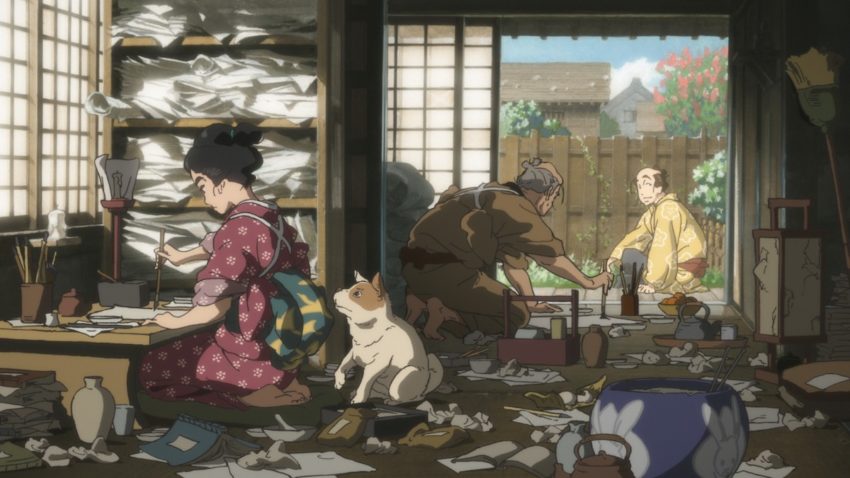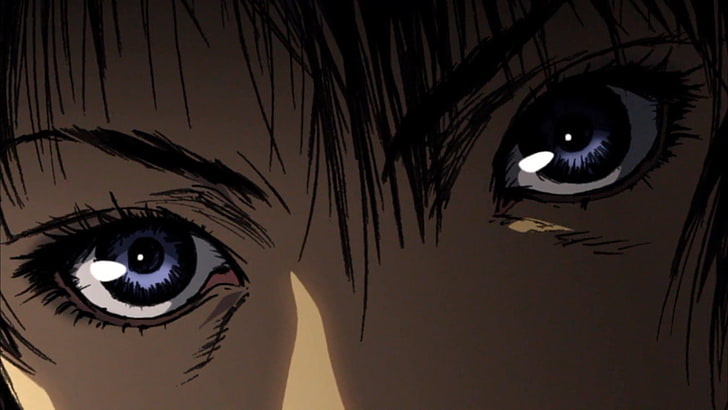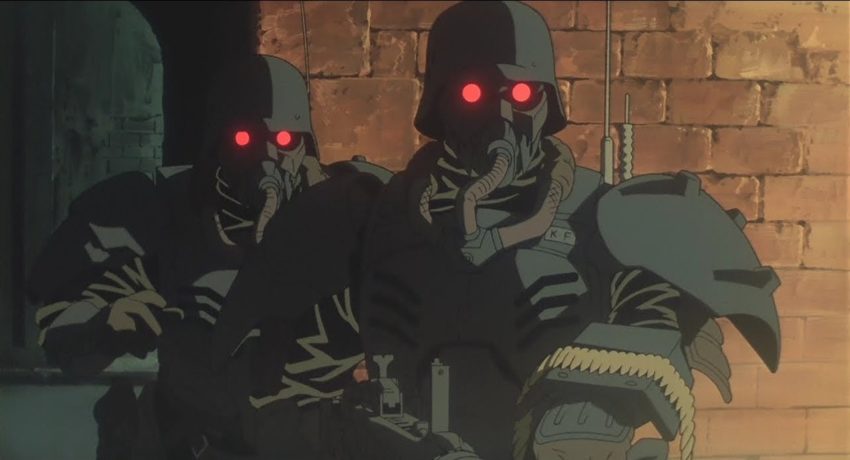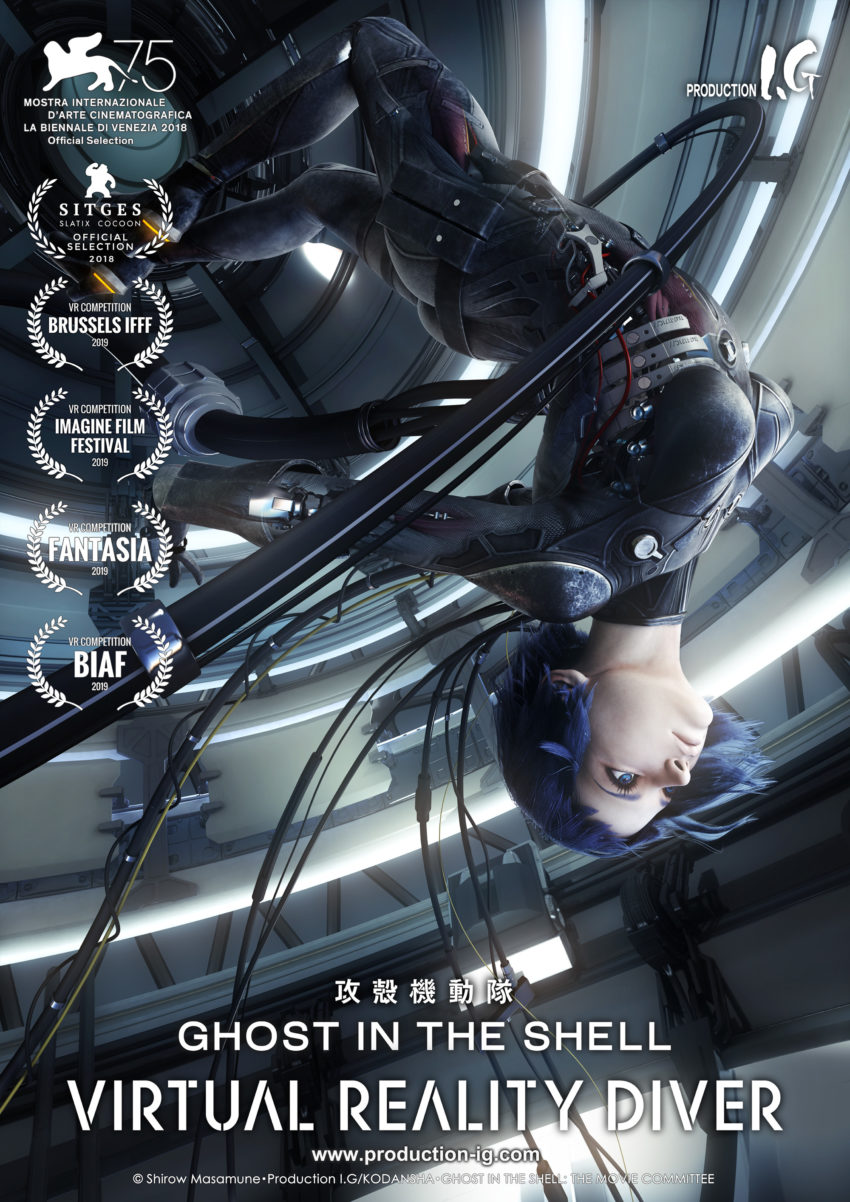Interview: Francesco Prandoni
May 12, 2021 · 0 comments
By Gianni Simone.

In the world of Japanese animation, one company that has consistently come up with original and beautifully produced works is Production I.G, one of the hundreds of studios located in Tokyo’s western suburbs. I had a chance to talk about Production I.G’s history and philosophy, and recent developments in the anime industry with Italian-born Francesco Prandoni who is in charge of the company’s International Operations – some attendees at past Scotland Loves Anime events may have spotted him lurking on the sidelines as a minder for several big-name guests, including Yoshimi Itazu and Keiichi Hara.

“Production I.G started in 1987 as a tiny studio with five people in one rented room, located near JR Kokubunji Station,” Prandoni says. “Today the studio has 120 full-time employees, and, fortunately, more rooms to accommodate them. The company’s name comes from the initials of the two founders, producer Mitsuhisa Ishikawa and animator Takayuki Goto. Collaboration with director Mamoru Oshii proved instrumental to raising the studio’s profile, and Production I.G started gathering attention with the two Patlabor movies (1989 and 1993), and especially with Ghost in the Shell (1995) which became influential on Hollywood creators such as James Cameron and the Wachowskis. The studio’s first full digital production, Blood: The Last Vampire (2000) became one of the main reasons Quentin Tarantino contacted I.G for creating the animation sequence in Kill Bill: Vol. 1.” [pictured]

Prandoni thinks that in Japan’s highly competitive animation market, every studio has to carve its own slice of the pie. “There are big studios outputting character-driven, merchandising-centered, long-running franchise shows,” he says. “There’s a myriad of micro-facilities forming a sea of subcontractors. Production I.G went in a different direction, actively investing in its projects, and establishing itself as a studio with a limited number of high-end and edgy productions every year. Creators are our competitive edge, our greatest asset, and a hard-to-find one, therefore we would like to keep a working environment that can be attractive for the best talents around. Nowadays the studio works on feature films, TV series, and Netflix originals. Since a couple of years ago we have expanded into the production of virtual reality experiences, and the first two titles, based on Ghost in the Shell, had the honor of being selected at the Venice Film Festival.”
According to Prandoni, one difference from the output of the 1990s and early 2000s is that in recent years, the dark SF/action projects most people associated I.G with have been paired with family and/or drama-oriented stories, such as A Letter to Momo [pictured], Giovanni’s Island and Miss Hokusai, which all became internationally award-winning films. “We also do sports series, such as Haikyu!! and Kuroko’s Basketball,” he says.

Today, most anime shows produced in Japan are being simulcast in a remarkable number of countries, and feature films screen at major international film festivals, where they are often greeted with recognitions. “However, animation in Japan has always been primarily intended for the domestic audience,” Prandoni points out. “This is also the main reason for Japanese animation uniqueness, as it has never tried to meet ‘international’ standards by adapting to marketing rules and storytelling algorithms. This uniqueness eventually turned out to be the strongest appeal when Japanese productions were ‘discovered,’ at different points in time, by non-Japanese audiences.
Prandoni compares Japanese animation’s position in the international market to ukiyo-e. “Woodblock printing was an astounding technique,” he says, “yet by the end of the 19th century had become limited to a number of artisans because it was replaced by photographs. But this does not make woodblock prints less beautiful. In the same way, hand-drawn animation is something that all the world except Japan has abandoned in favor of CG, making this country a sort of Galapagos within the industry. Visitors from the United States – but also Singapore or Taiwan – are amazed at the sight of Japanese animators drawing with pencil on paper. Professionals and journalists find hard to believe we did not use CG for the visual effects in Jin-Roh [pictured] or motion capture in A Letter to Momo. It is a fact that today’s animation industry in Japan, like the whole entertainment business throughout the world, needs to adapt to quick and drastic changes in distribution and business models. But as more and more productions rely entirely on CG, they still retain the so-called cel-look which is so distinctive to anime.

Production I.G’s output, like the anime industry in general, has been affected by the COVID-19 pandemic. “Production had to slow down a bit, which translated in delays along the line,” Prandoni says. “While CG studios could theoretically switch to remote working more easily, hand-drawn 2D animation can’t adapt as easily. Voice recording became an issue, too. Until we all adapted to the new normal. More generally, the pandemic affected the marketing of most titles, as public events and special screenings were cancelled, and the anime industry strongly relies on those. As for Hollywood blockbusters and independent films alike, theatrical distribution suffered the most, and many titles had to postpone their release, or skip it altogether and opt for straight-to-digital distribution. This might be how the immediate future will be looking like as long as we have to deal with the current health crisis. But the success of Demon Slayer demonstrates, if anything, that people still love going to theatres.
According to Prandoni, the anime industry is going through several major changes, many of which originated about ten years ago. “Japanese animation evolved from the 1960s as a form of entertainment aimed almost exclusively to the domestic market, and with few exceptions, this has remained true until the early 2010s. However, today we see USA- and China-based streaming platforms pursuing increasingly more aggressive strategies in order to secure rights of Japanese anime series, going straight to studios instead of dealing with sales companies. For Production I.G, making B: The Beginning, which was our first Netflix original back in 2018, has been a remarkably positive experience, as Netflix allowed considerable freedom to the staff on a project that otherwise would have never been possible for the Japanese market only. The series went in competition at Annecy, with a second season out in 2021.

“We are living through a paradigm shift in how films and series are being financed, and how costs are being recouped, with Japan not necessarily representing the primary market. This is a confirmation that watching Japanese animation outside Japan has become natural for an ever-growing audience. But also that animation studios in this country need to be more competitive on a global scale. We are doing our best to be there.”
Gianni Simone is the author of Otaku Japan.
Leave a Reply